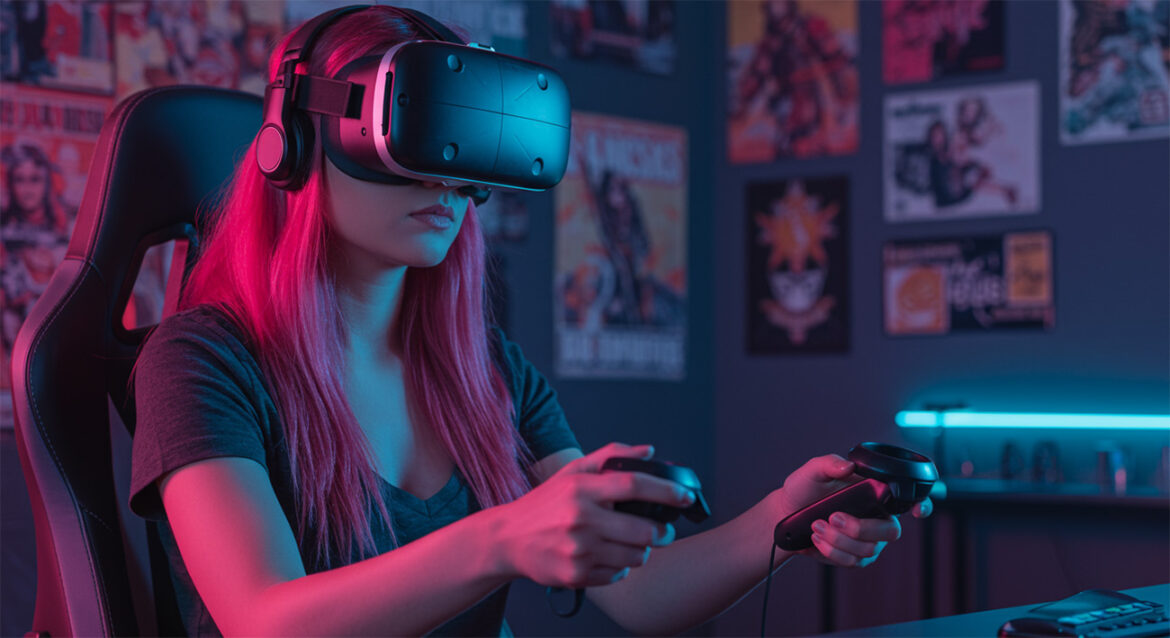If you’re anything like me, you’ve probably experienced that unsettling feeling – perhaps even after just watching a VR video online. It’s a genuine concern, particularly if you’re prone to travel sickness. But fear not, because there are concrete strategies for stopping VR motion sickness before it even starts, or at least managing it effectively.
Understanding the Culprit: Why VR Makes Us Queasy
The primary reason behind VR motion sickness, often dubbed cybersickness, is typically a sensory conflict. Imagine this: your eyes are telling your brain you’re soaring through a virtual world, perhaps moving at breakneck speed, while your inner ear, responsible for balance (your vestibular system), is screaming that you’re perfectly still. This disconnect can trick your brain into thinking you’ve been poisoned, prompting symptoms like nausea, headaches, sweating, dizziness, fatigue, and a general feeling of being off-kilter.
Other factors that exacerbate this include:
- Delayed Reactions (Latency): A tiny delay between your physical movements (like turning your head) and the virtual world updating can disrupt your sense of balance.
- Low Framerates: If the headset isn’t displaying enough frames per second (FPS), visuals can appear choppy, creating a further disconnect.
- Overwhelming Visuals: Experiences with too many vibrant colours, complex patterns, or erratic movements can overwhelm your brain.
- Individual Sensitivity: Some people are simply more susceptible due to genetics or past experiences with motion sickness in cars, boats, or planes.
Building Your “VR Legs”: Gradual Adaptation and Breaks
My first and foremost piece of advice: take it easy. Don’t jump straight into the most intense experiences. Start with short VR sessions, say 5 to 10 minutes, and gradually extend them as your body adapts. It’s a process of acclimatisation, much like finding your ‘sea legs’.
The absolute golden rule here is to stop immediately if you feel even slightly queasy. Pushing through it can create a negative association with VR that’s hard to shake. Plan for regular, short breaks within your sessions, and longer ones afterwards to let your body reset.
Optimising Your Setup & Settings
Beyond simply getting used to it, tweaking your hardware and in-game settings can make a world of difference:
- Framerate is King: For a hardware junkie like myself, this is paramount. A higher framerate and refresh rate (Hz) significantly reduce motion blur and lag, providing smoother visuals. Research suggests 120fps is a crucial threshold for reducing nausea and discomfort. If your system can pump out those frames, do it; a powerful graphics card (like my 2070 back in the day) is essential.
- Locomotion Choices: Opt for teleportation movement over smooth locomotion initially. Teleporting instantly snaps you to a new position, avoiding the disorienting feeling of artificial movement without real-world motion.
- Snap Turning: Similarly, snap turning (incremental rotation) is far more forgiving than smooth turning. Smooth rotation can really mess with your brain.
- IPD Adjustment: Correct Interpupillary Distance (IPD) ensures clear visuals and reduces eye strain and dizziness. Make sure your headset’s lenses are aligned properly with your eyes.
- Comfort Options: Many games include comfort vignettes, which darken your peripheral vision during movement. While some people find these helpful, others, like me, might find them counter-productive. Experiment to see what works for you.
Environmental Factors
It’s not all about software. Your physical surroundings play a part too:
- Fan Power: A simple fan blowing on you can provide a sense of direction and grounding. It also helps keep you cool, which is always a bonus during intense sessions.
- Stay Grounded: Consider playing seated, especially for games that don’t require much physical movement. This can provide a stable reference point for your body. If standing, ensure you have ample, clear space to avoid accidental bumps.
- Fresh Air: Good ventilation in your play area can prevent overheating and general discomfort.
Tried and Tested Remedies
Before diving in, consider some old-school remedies:
- Ginger, whether in candy form or a nice brew, is a widely recommended aid for motion sickness and seasickness, and many find it helps with VR too.
- Non-drowsy Dramamine: I’ve heard some people keep this handy for dire needs, and it can be effective in managing severe symptoms.
Choosing Your First VR Experiences Wisely
Finally, be discerning with your game choices. Start with stationary experiences like:
- Rhythm games: e.g. Beat Saber, Synth Riders, Pistol Whip.
- Puzzle games: e.g. Puzzling Places, I Expect You To Die.
- Teleport-only games: Many beginner-friendly titles listed in VR starter guides use this movement style.
Avoid games with unpredictable movements, jumping, or rapid changes in elevation (looking at you, Boneworks!) until you’ve built up a strong tolerance.
Ultimately, stopping VR motion sickness is about listening to your body and respecting its signals. It’s a journey, and patience is key. While some individuals may always retain a degree of sensitivity, these concerted efforts significantly contribute to stopping VR motion sickness for the vast majority of users, allowing them to truly enjoy the immersive potential of virtual reality.
